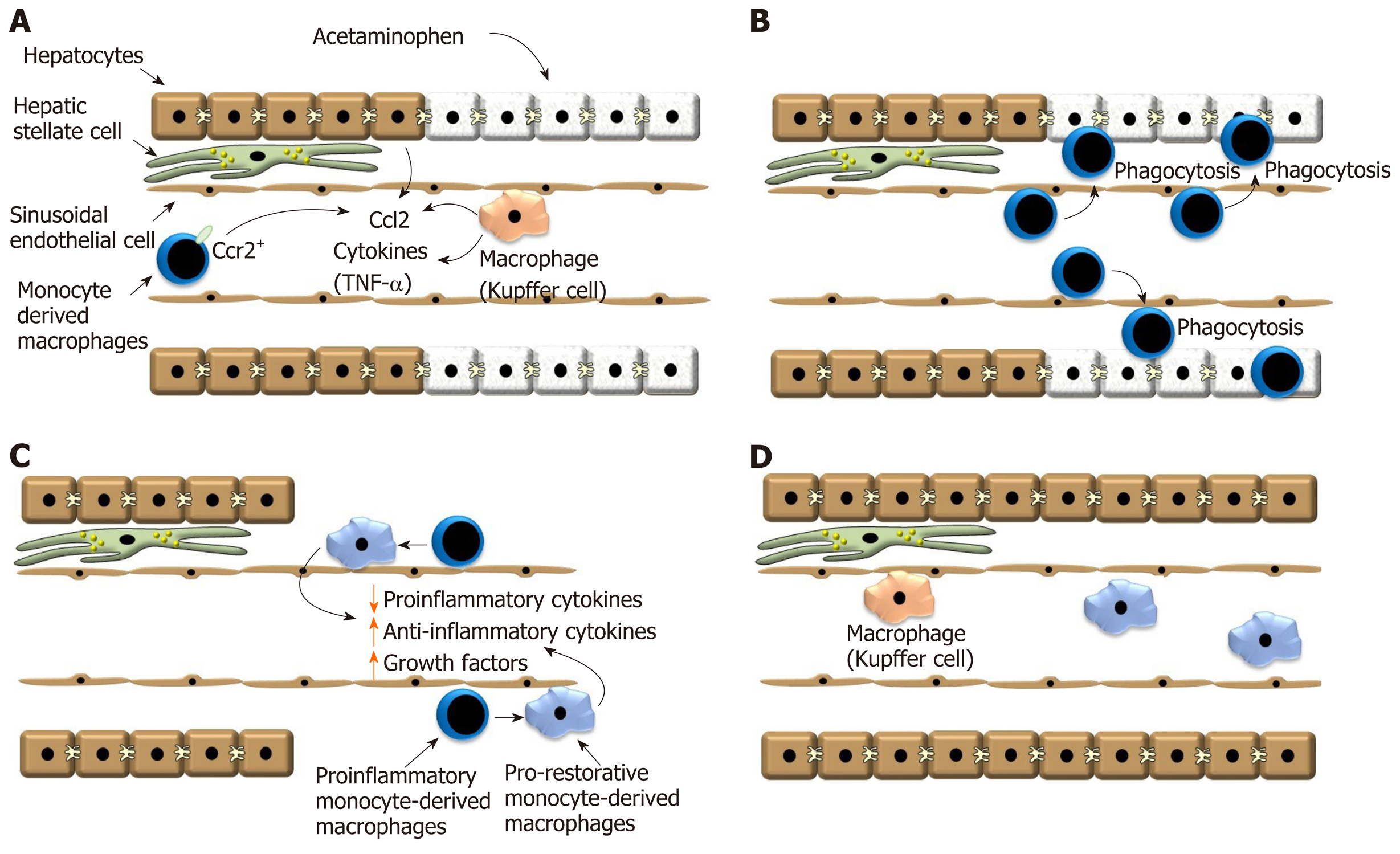Copyright
©The Author(s) 2020.
World J Gastroenterol. Apr 28, 2020; 26(16): 1879-1887
Published online Apr 28, 2020. doi: 10.3748/wjg.v26.i16.1879
Published online Apr 28, 2020. doi: 10.3748/wjg.v26.i16.1879
Figure 1 Ly6Chi CX3CR1- proinflammatory macrophages rapidly accumulate in the liver after acetaminophen overdose.
A: After exposure to a hepatotoxicant, such as acetaminophen, hepatocyte necrosis triggers release of Ccl2 by hepatocytes and Kupffer cells. Ccl2 recruits Ccr2 expressing monocytes to the liver that ultimately become macrophages; B: Monocyte-derived macrophages traffic into the necrotic lesions where they phagocytose dead cell debris; C: Monocyte-derived macrophages then transition from a proinflammatory phenotype into a pro-reparative phenotype. This process decreases synthesis of proinflammatory cytokines, increases synthesis of anti-inflammatory cytokines and pro-reparative growth factors; D: Proliferation of hepatic cells ultimately results in the restoration of the hepatic structure. Ccl2: Chemokine, chemokine ligand 2; Ccr2: C-C chemokine receptor type 2; TNF-α: Tumor necrosis factor.
- Citation: Roth K, Strickland J, Copple BL. Regulation of macrophage activation in the liver after acute injury: Role of the fibrinolytic system. World J Gastroenterol 2020; 26(16): 1879-1887
- URL: https://www.wjgnet.com/1007-9327/full/v26/i16/1879.htm
- DOI: https://dx.doi.org/10.3748/wjg.v26.i16.1879









